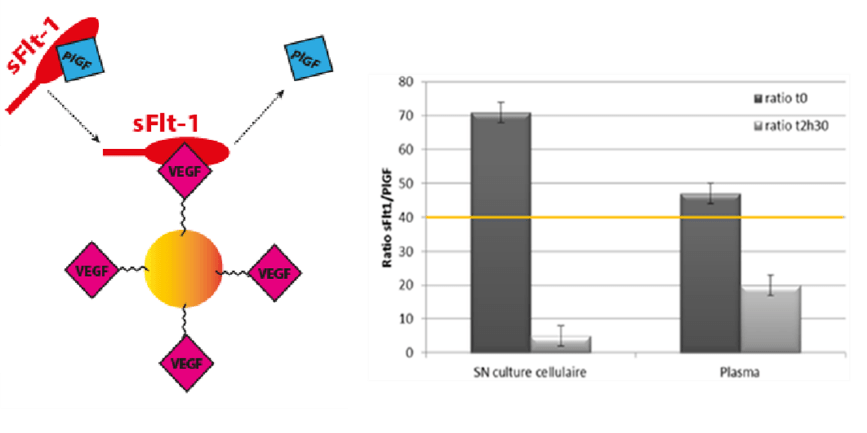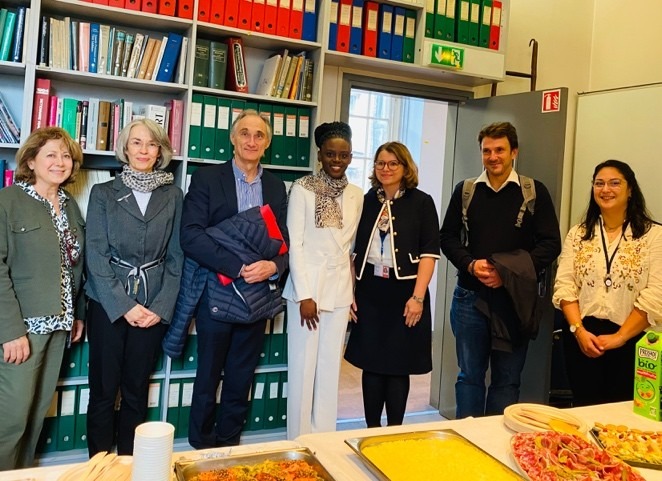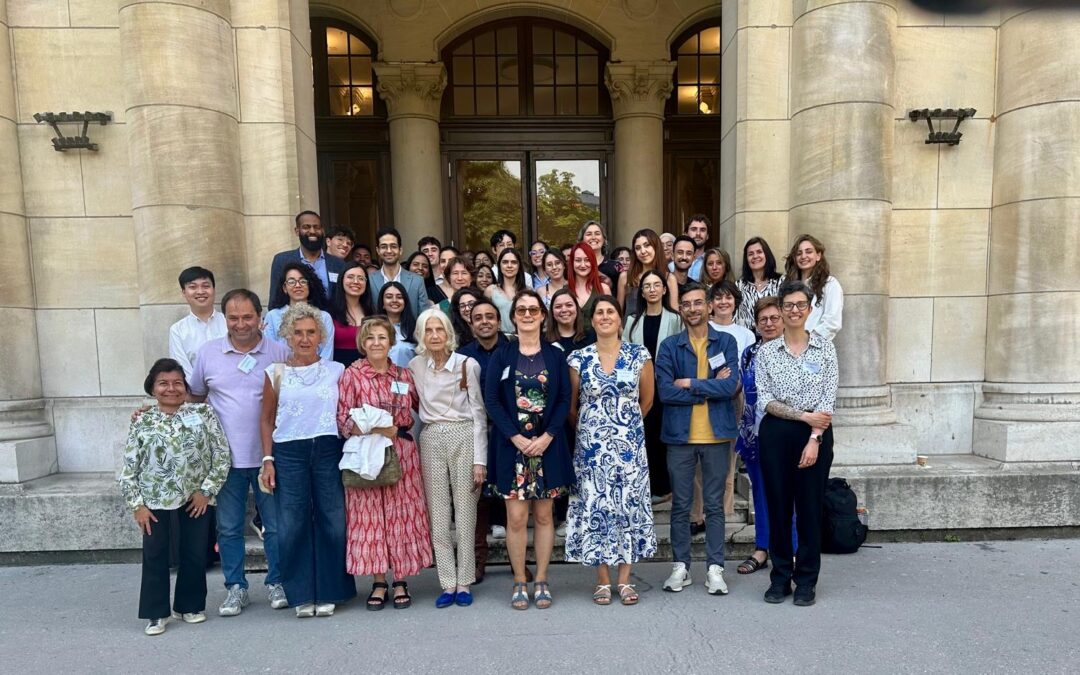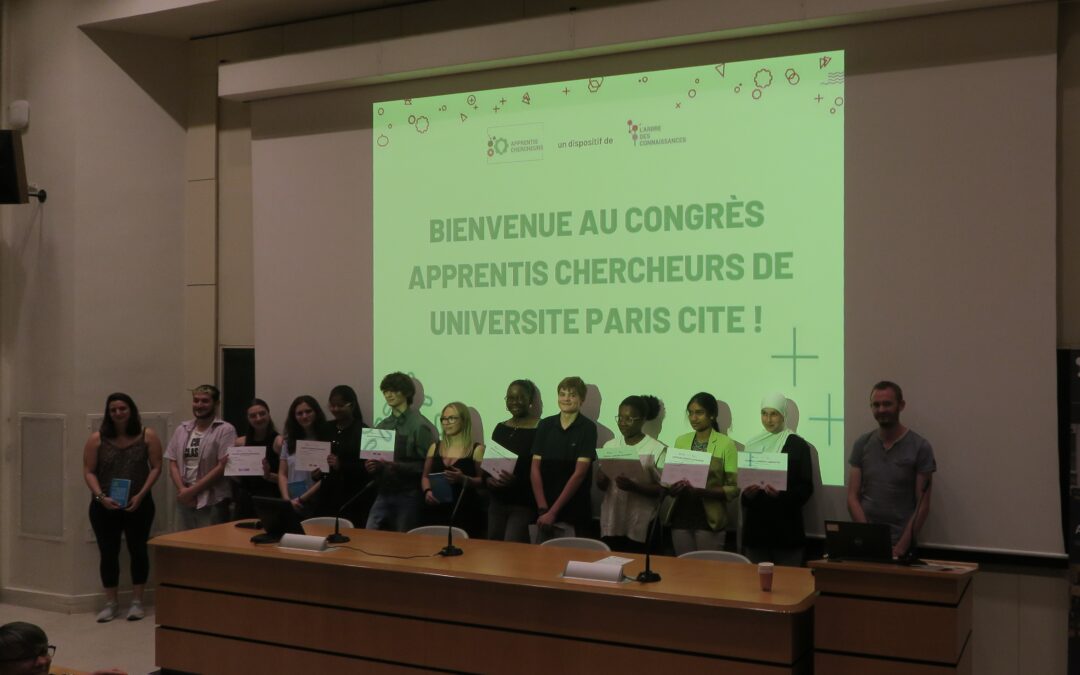_____________________
Therapeutic strategies in perinatality

The diagnosis and treatment of many diseases during pregnancy remain difficult due to the lack of systematic studies on the consequences for fetal development. In this context, the challenge is to control the distribution of active molecules (small molecules or biomolecules) between the 3 compartments: mother, placenta and fetus, or to propose alternative therapeutic strategies to the use of drugs. Our team is developing innovative therapeutic strategies for the pathologies of pregnant women, particularly preeclampsia, using two approaches: 1) the formulation of liposomes to target the human placenta and 2) the development of a plasma apheresis strategy.
1- Developing a platform of nanovectors dedicated to the treatment of various diseases of pregnant women involving the placenta
Nanomedicine is a concept for the delivery of active molecules based on non-toxic, biocompatible and biodegradable nanovectors that transport them to their target, advantageously modifying their biodistribution, increasing their efficacy while reducing their side effects. Among nano-objects, the development of adapted liposomal formulations seems very promising for treating specific patients such as pregnant women, where specific distribution is required.
Our team has developed methods for studying interactions between the placenta and liposomes of different compositions (charge, size, lipids, molecule-loaded or model siRNA) in collaboration with partners specializing in the human placenta (UMR S1139) (Valero et al. Int. J.Pharm., 2017). Formulations encapsulating siRNAs were tested on an in vitro model of primary human trophoblast culture and demonstrated their ability to deliver a model siRNA there (Valero et al. Molecules, 2018). A method for the quantitative assay of fluorescent lipids forming our liposomes in human placental tissue has been developed (Alhareth et al. Int. J.Pharm., 2019). Thanks to these models and analytical methods, we have been able to identify the characteristics of our liposomal formulations (size, charge, overlap) that govern their interactions with the placenta and the mechanisms involved in the internalization of these liposomes into the placenta (Fliedel et al. 2022).

Fig. 1:Interaction of fluorescent liposomes (red) with human placenta (blue = nucleus, green = actin)
Publications :
- Influence of Liposomes’ and Lipoplexes’ Physicochemical Characteristics on Their Uptake Rate and Mechanisms by the Placenta. Fliedel L, Alhareth K, Seguin J, El-Khashab M, Chissey A, Mignet N, Fournier T, Andrieux K. Int J Mol Sci. 2022 Jun 4;23(11):6299.
- Qualitative and quantitative analysis of the uptake of lipoplexes by villous placenta Explants. Alhareth K., Valero L., Elhady Mohamed K., Fliedel L., Roques C., Gil S., Mignet N., Fournier T., Andrieux K. Int. J. Pharm. 2019, 567, 118479.
- Liposomes as Gene Delivery Vectors for Human Placental Cells. Valero L., Alhareth K., Espinoza Romero J., Viricel W., Leblond J., Chissey A., Dhotel H., Roques C., Campiol Arruda D., Escriou V., Mignet N., Fournier T., Andrieux K. Molecules. 2018 May 4;23(5). pii: E1085.
- Assessment of dually labelled PEGylated liposomes transplacental passage and placental penetration using a combination of two ex-vivo human models: the dually perfused placenta and the suspended villous explants. Valero L., Alhareth K., Gil S., Simasotchi C., Roques C., Scherman D., Mignet N., Fournier T., Andrieux K. International Journal of Pharmaceutics 532 (2017) 729–737.
2- The strategy of specific and competitive apheresis of sFlt-1
Preeclampsia is a serious hypertensive complication of pregnancy affecting 2-7% of pregnancies, and is responsible for over 70,000 maternal deaths worldwide every year. It is also a major cause of extreme prematurity. At present, there is no curative therapy, and maternal recovery can only be achieved at birth, which is often the cause of induced prematurity. The development of innovative therapeutic strategies for preeclampsia, limiting its maternal and perinatal complications, is therefore one of the major priorities in perinatal health.
We are developing a specific and competitive apheresis approach, enabling plasma depletion of sFlt-1 while recovering PlGF bioavailability. The aim is to modulate the sFlt-1/PlGF ratio, thereby restoring normal endothelial function and slowing disease progression in order to limit deliveries in the area of extreme prematurity.

Fig.2: The specific and competitive apheresis strategy a/ Diagram of the specific and competitive interaction between VEGF-functionalized beads and the sFlt-1/PlGF complex b/ Modultaion of the sFlt-1/PlGF ratio on cell culture supernatants or plasma from preeclamptic women before and after apheresis.
To this end, we are developing new aptamer-type sFlt-1 ligands as an alternative to VEGF, working on the functionalization of microparticles and developing biological assays to validate this approach.
Publications:
- Microfluidic fluidized bed system based on VEGF functionalized magnetic beads for restoring the physiological sFlt1/PlGF balance in preeclampsia: proof of concept. L. Trapiella-Alfonso, Lucile Alexandre, Kelly Pons, Camille Fraichard, Marylise Shuster Hebert, Jean Guibourdenche, Vassilis Tsatsaris, Stephanie Descroix, Nathalie Gagey-Eilstein*, Edouard Lecarpentier*. Hypertension 2019, 74, 145-153.
- Controlling surface ligand density of streptavidin-magnetic particles by a simple, rapid and reliable chemiluminescent test: development and validation. Diego Bouzas-Ramos, Laura Trapiella-Alfonso, Kelly Pons, Jorge Ruiz Encinar, José M. Costa-Fernández, Vassilis Tsatsaris, Nathalie Gagey-Eilstein*. Bioconjugate Chemistry, 2018, 29, 2646-2653.
- Colorimetric immunoassays for the screening and specificity evaluation of molecules disturbing VEGFs/VEGFRs interactions. Trapiella-alfonso L., Broussy S., Liu W.Q., Vidal M., Lecarpentier E., Tsatsaris V., Gagey-Eilstein N.*, Anal. Biochem., 2018, 544:114-120.
_____________________
À lire aussi

October 2025 – Thesis defense at UTCBS: Mitta PIERRE
On October 1st, 2025, Mitta PIERRE successfully defended her doctoral thesis entitled “Nanoformulations of antioxidant active ingredients for ophthalmic administration in the prevention of age-related macular degeneration (AMD)” supervised by Pr. Christine CHARRUEAU and co-supervised by Dr. Diana LAMAA
September 2025 – [Keynote research] Nathalie Mignet,Head of Laboratory, Nanomedicines and lipid nanoparticles for nucleic acid delivery
[Keynote research] Nathalie Mignet, Nanomedicines and lipid nanoparticles for nucleic acid delivery

July 2025 – Workshop du master erasmus mundus Nanomed
Workshop du master erasmus mundus Nanomed

June 2025 – Université Paris Cité’s Apprentis Chercheurs conference was held last June, with UTCBS taking part.
Université Paris Cité’s Apprentis Chercheurs conference was held last June, with UTCBS taking part.
